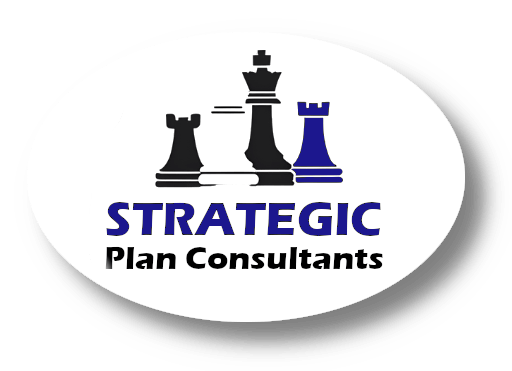SPC Help Center Topics
SPC always wants to make things easy for you & your team. No compliance-speak - just real answers & insight. We will continue to update the Help Center as clients ask us questions or as government regulations change.
401k Deferral (Under 50 Yrs Old) - $23,000
401k Deferral (Over 50 Yrs Old) - $30,500 (with catch-up)
401k w/Profit Sharing (Under 50 Yrs Old) - $69,000
401k w/Profit Sharing (Over 50 Yrs Old) - $76,500
SEP IRA - Lesser of $69,000 or 25% of pay (20% for Sole-Prop)
HCE Threshold - $155,000 or 5%+ Ownership or Immediate Family of Owner
Key Employee - $220,000 (for top heavy purposes)
401k Deferral (Under 50 Yrs Old) - $23,500
401k Deferral (Over 50 Yrs Old) - $31,000 (with catch-up)
401k w/Profit Sharing (Under 50 Yrs Old) - $70,000
401k w/Profit Sharing (Over 50 Yrs Old) - $77,500
SEP IRA - Lesser of $70,000 or 25% of pay (20% for Sole-Prop)
HCE Threshold - $160,000 or 5%+ Ownership or Immediate Family of Owner
Key Employee - $230,000 (for top heavy purposes)
SECURE 2.0 is a follow-up to the Original SECURE & CARES Acts of 2019/2020. It was signed into law on Dec 29, 2022 and could be the largest change to the retirement plan industry in the last 20 years. This bill was primarily focused on increasing participation & savings rates in Employer-Sponsored Retirement Plans. There are a lot of great provisions - there are also a lot of onerous provisions.
As you can imagine, it is a very long piece of legislation. Below are a few of the highlights:
- Auto-Enroll Mandate for businesses with over 10 Employees & have been in business for 3+ years.
- Employer Contributions can be made as ROTH
- Student Loan Payments can be used to determine Employer Match
- High Earners will need to contribute 401k Catch-up as ROTH
- Emergency Savings Accounts inside retirement plans
- Easier Hardship Distribution Rules & Easier Self-Correction Rules
- Increased limit for Terminated Participant Force-Outs
SPC can perform a SECURE 2.0 Plan Review to see what provisions need to be added to your existing plan and whether it might be advantageous to include some of the optional provisions moving forward. Contact us today for an individual consultation to see how SECURE 2.0 will affect your plan.
2024 Deadlines for starting a new plan - Act Now
401k Plan with Employees - Safe Harbor Deadline - Oct 1, 2024
Profit Sharing Plan - Before the company files its taxes for 2024 or Sept 15, 2025
SEP - Before the company files its taxes for 2024 or Sept 15, 2025
Cash Balance Plans - Before the company files its taxes for 2024 or Sept 15, 2025
Sole Prop SoloK - Before April 15, 2025
2025 Deadlines - Start Planning Now
401k Plan with Employees - Safe Harbor Deadline - Before Oct 1, 2025
Profit Sharing Plan - Before the company files its taxes for 2025 or Sept 15, 2026
SEP - Before the company files its taxes for 2025 or Sept 15, 2026
Cash Balance Plans - Before the company files its taxes for 2025 or Sept 15, 2026
Sole Prop SoloK - Before 4/15/26
Controlled Group - If you own 80% or more of multiple businesses individually, or as part of the same ownership group, you could be a controlled group. This means that a retirement plan covering one of the companies must cover all of the companies. This rule is to prevent owners from separating themselves for personal benefit without providing benefits to their employees.
Example: Husband & Wife own a trucking company with drivers and also own a warehouse company with office staff. They are 100% owners of both businesses. Even if the businesses don't work together, they would most likely be a controlled group and need to cover both businesses under one plan or "mirrored" separate plans.
Affiliated Service Group - Generally reserved for licensed professionals (Drs, attorneys, architects, etc). With any common ownership of businesses, if a "significant portion" of your income comes from a company you have an active ownership in, you might be an affiliated service group and your plan would need to cover both businesses.
Example: Doctor A has a minority ownership stake in Clinic B. Doctor A invoices Clinic B for his work at the clinic through his personal medical business. This could be an Affiliated Service Group because they are both earning money from the same encounter/client/task.
If you are you a realtor or other 1099 independent contractor, there are plans for you as a Sole Proprietor. SoloKs are a fantastic option for owner-only businesses without employees. Other types of plans are also available if your 1099 is subject to SE Taxes (earned income and not from royalties, investment dividends, or other passive income).
Tip: Always ask yourself, are you "working" for your 1099 or does your 1099 come passively from prior work/prior investment/ownership interests.
